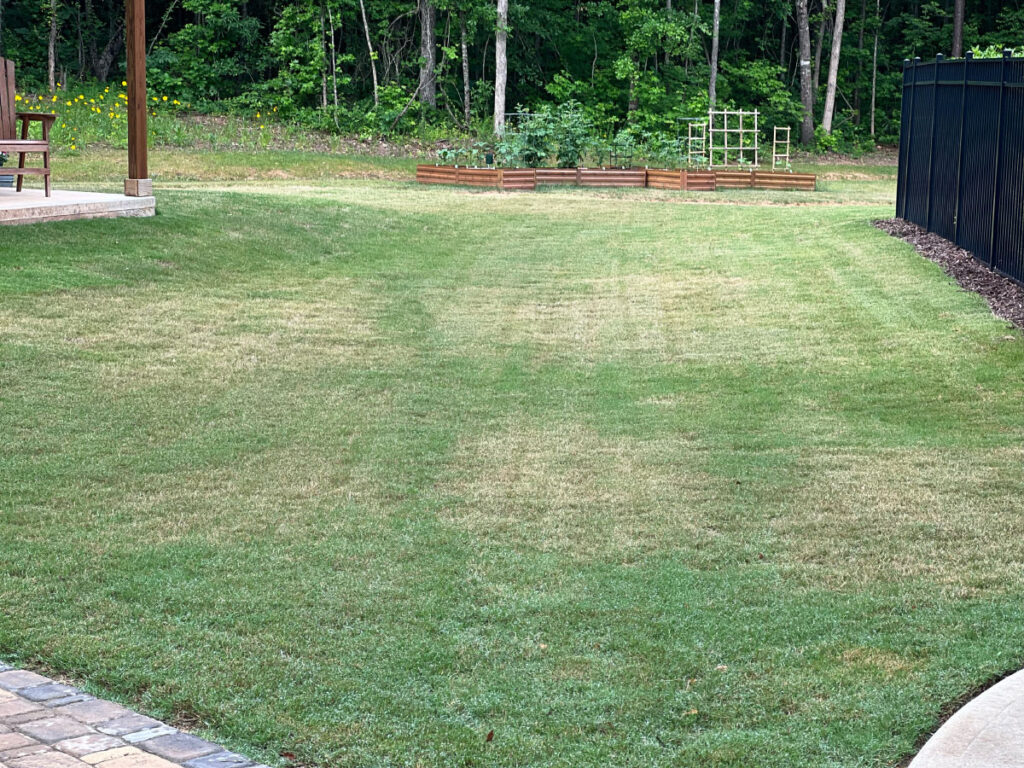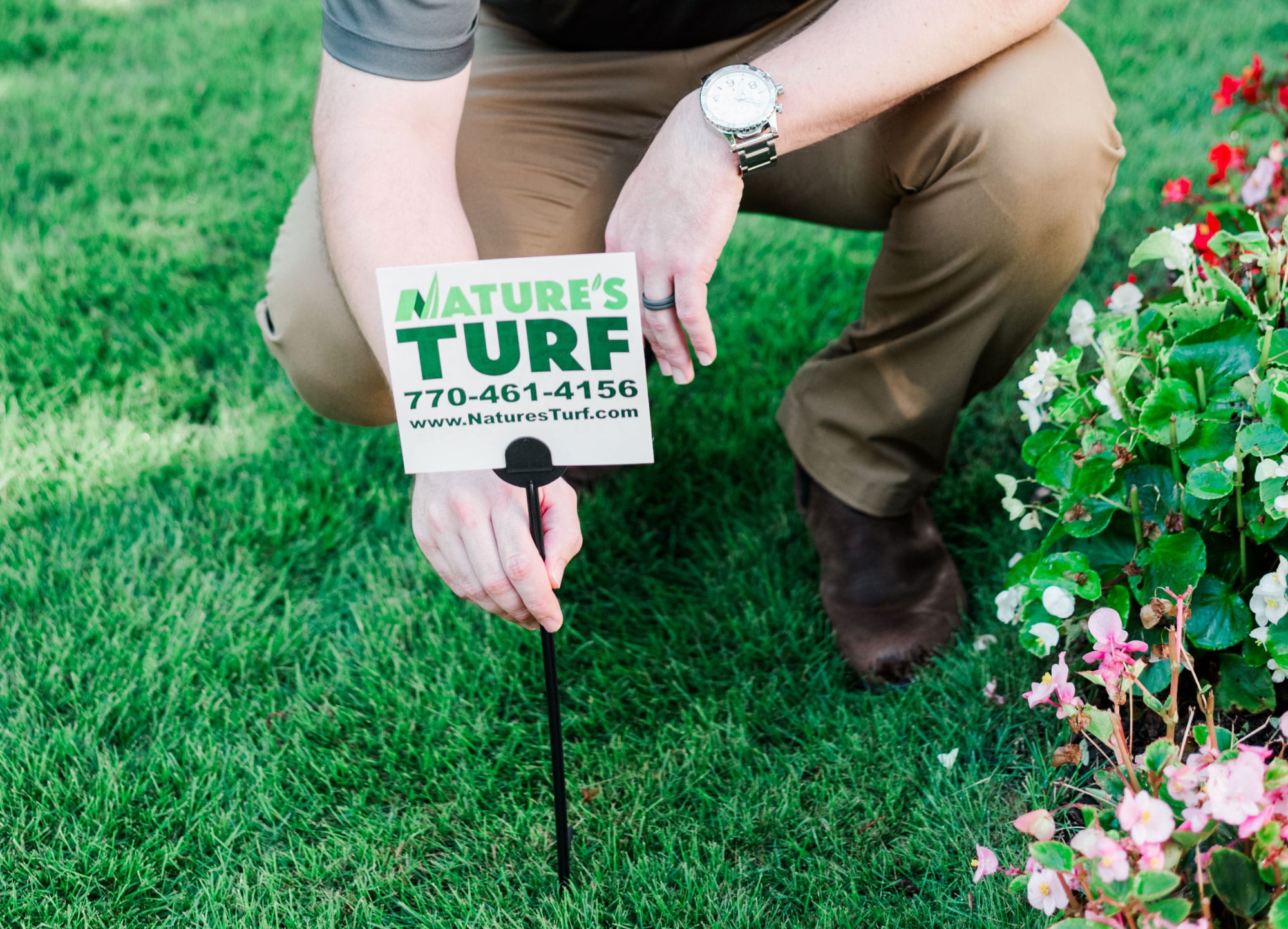It’s been hot and dry. The dark green color of your lawn has slowly faded as the soil moisture has dwindled. When significant rainfall happens, most of the color bounces back, but there are a few areas that are now thin, discolored, or have only sparse tufts of green grass. These are symptoms of drought stress. What is drought stress, what causes it, how can it be repaired, and is there a way to prevent it? Read on to learn about the what, the why, and the how to repair and prevent drought stress.
What Is Drought Stress?

Drought stress spots are the physical symptoms present in a lawn after long periods of dryness and heat. Bermuda and Zoysia lawns are exceptionally well fit for our Atlanta summers. They have great drought and heat tolerance, but that doesn’t mean they are immune to the need for water.
Short-term symptoms range from mild discoloration and poor hardiness to temporary dormancy. These are normal stress responses, but they may result in severe injury or death from desiccation if these periods are long enough.
Why Does Drought Stress Occur?
Prolonged periods of hot, dry weather are capable of killing blades, roots, and shoots. Moisture is a requirement for plant life. Hydration, the use of nutrition, and the way plants make energy all require water. Our turfs are no different. While they have great drought tolerance, they can only hold out for so long. Without water, plant cells eventually dry out beyond a point of rehydration.
Spots in our yards occur because of inconsistencies in the soil or surrounding environment within our yards. These are known as micro-climates. Variations in compaction, organic matter, exposure to sunlight, uniformity of irrigation water, and any other number of factors can result in some areas that recover quickly and thrive after a drought event and other areas that fail or struggle to recover.
How Can Drought Spots Be Repaired?
Choose the right method to repair these spots based on the size and severity of the damage.
- Small spots or areas that have significant living turf can be recovered. Our Bermudas and Zoysias spread with structures called rhizomes and stolons. We can encourage this with the following sound cultural practices:
- A good mowing schedule.
- Watering appropriately.
- Aerating areas of high compaction.
- Topdressing thin areas.
- Sticking with a good fertility program.
- Larger areas may require additional work or consideration.
- If a large area fails, it’s important to consider whether the environment was favorable before the drought. Ask these questions:
- Was the turf receiving enough light? (If so, good!)
- Was the turf competing with surrounding trees for light, nutrition, and hydration? (If so, this is a problem.)
- Were the soil conditions good?. (If so, good!)
- Once you have confirmed that the lawn’s basic needs were met, good preparation and resodding may be required to repair large areas.
- If a large area fails, it’s important to consider whether the environment was favorable before the drought. Ask these questions:
How Can Drought Stress Be Prevented?
The best defense against drought stress is a good offense. Healthy plants will put up the best fight. Plants that aren’t stressed in other ways will be most successful in the face of adversity. Bermuda and Zoysia that have the right amount of light, typically get the right amount of water, are fertilized well, mowed well, and aren’t facing additional challenges such as thatch accumulation or compaction will be best suited to tolerate stress and recover from drought.
Faithfully mowing, watering, and employing Nature’s Turf or your trusted lawn care company to apply fertilizers and execute additional functions like aeration will make your turf happiest, healthiest, and most prepared to fight when challenges arise.
Important Takeaways:
- Drought stress spots are the physical symptoms present after long periods of dryness and heat.
- Prolonged periods of hot, dry weather are capable of killing blades, roots, and shoots.
- Choosing the method you use to repair these spots depends on the size and severity of the damage.
- Small areas may be grown back together with good cultural practices.
- Large areas may need to be re-sodded once it is confirmed that the basic needs of the turf can be met.
- The best defense against drought stress is a good offense. Healthy plants will put up the best fight.








